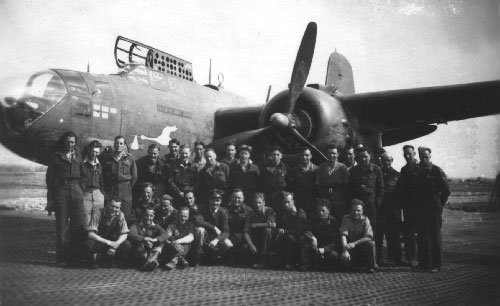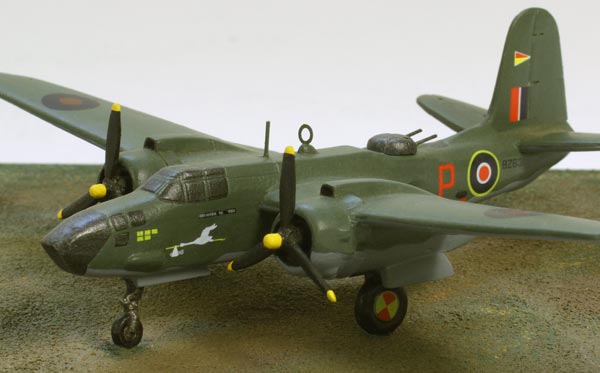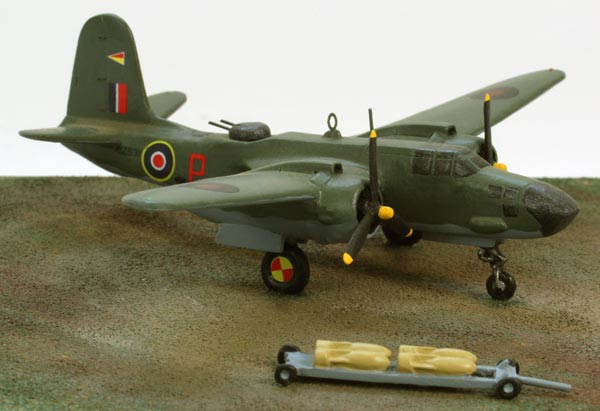Douglas Boston Mk V
Douglas Boston Mk V BZ631 P ‘Jacqueline Anne’
XIII Squadron, 232 Wing, Italy 1944.
The Douglas Boston Mk V was one of many aircraft types operated by the Royal Air Force during World War II under the lend lease scheme from the Americans. Originally designated the DB-7 this medium bomber was the result of a competition between Douglas, North American, Stearman, Bell, and Martin to build a new bomber for the United States Army Air Corps (USAAC). The new Douglas aircraft also received the attention of the French who after the Munich Crisis ordered over 100 aircraft.
Now designated the A-20 by the United States Army Air Corps (USAAC) an initial order was placed for the aircraft. The Douglas A-20 was powered by two Wright R-2600-7 Double Cyclone 14 cylinder radial engines each rated at 1,700 hp. The fuselage of the A-20 was divided into three sections, the pilot’s cockpit and the nosewheel bay beneath it, the bomb bay and radio equipment, and the rear gunner’s compartment.
On February the 20th 1940 the British Commission placed an order for 150 aircraft this was increased to 300 the following April. After several modifications to the design the A-20 was adopted by the British and renamed the ‘Boston’. Boston Mk Is were fitted with two-speed supercharged R-1830 engines and were used in a variety of roles. Fitted with AI radar the Boston made an effective nightfighter and was renamed the Havoc, some nightfighters were fitted with a 2,700 million cndle power searchlight in the nose to illuminate enemy aircraft which were to be attacked by accompanying Hurricanes and were called ‘Turbinlite’.
The Boston was used in many theatres and proved to be a versatile aircraft. Serving with the RAAF Flt Lt W. E. Newton flying a Boston became the only aircrew in the Pacific theatre to receive the Victoria Cross.
Boston Mk IIIs took part in D-Day laying smoke to form a screen between warships shelling the coast and landing craft approaching the beach.
The Boston modelled here is the Boston Mk V and was flown in the Mediteranean theatre with XIII Squadron during the Allied Invasion of Southern Italy in 1944.
The Squadron was deployed in March 1944 to Italy to give air support to American 5th Army and British 8th Army (the Desert Rats) ground forces fighting in the Italian campaign. The Boston Mk V, which was in many respects superior to the earlier marques of the Boston, replaced the Mk IV version on the Squadron in December 1944.
XIII Squadron was one of the four squadrons of 232 Wing engaged mainly on night “interdiction” operations intended to hinder, and so far as possible restrict, the movement of reinforcements and supplies to the enemy front-line. Flares were dropped to identify targets when there was no moon and bombs were released at heights generally below 2000ft. In favourable circumstances, targets were strafed by the pilot using the 0.5in forward firing guns in the nose or by one of the two rear gunners.
Opposition to air operations at this stage of the Italian campaign was light as air superiority by day and night was well-established. There were losses, nevertheless, mostly to light flak. It was not extensively used owing to the shortage of ammunition suffered by the German forces with their supply problems at this time, but was noticeably accurate on the occasions that it was used against the intruding aircraft vulnerable as they were at the height at which they were flying.
Although these operations were very much of a routine nature, they were an important adjunct to the daytime operations of the fighter bombers in their role in support of the ground forces in restricting and virtually preventing the movement reinforcements and supplies to the front-line in daylight.

Scale 1:144 Wingspan 5.1″ (130 mm)
Base size 6.37″ (162 mm) square (No. 4)
Weight not including base 5 ozs (142 grams)
Total number of models produced 41



